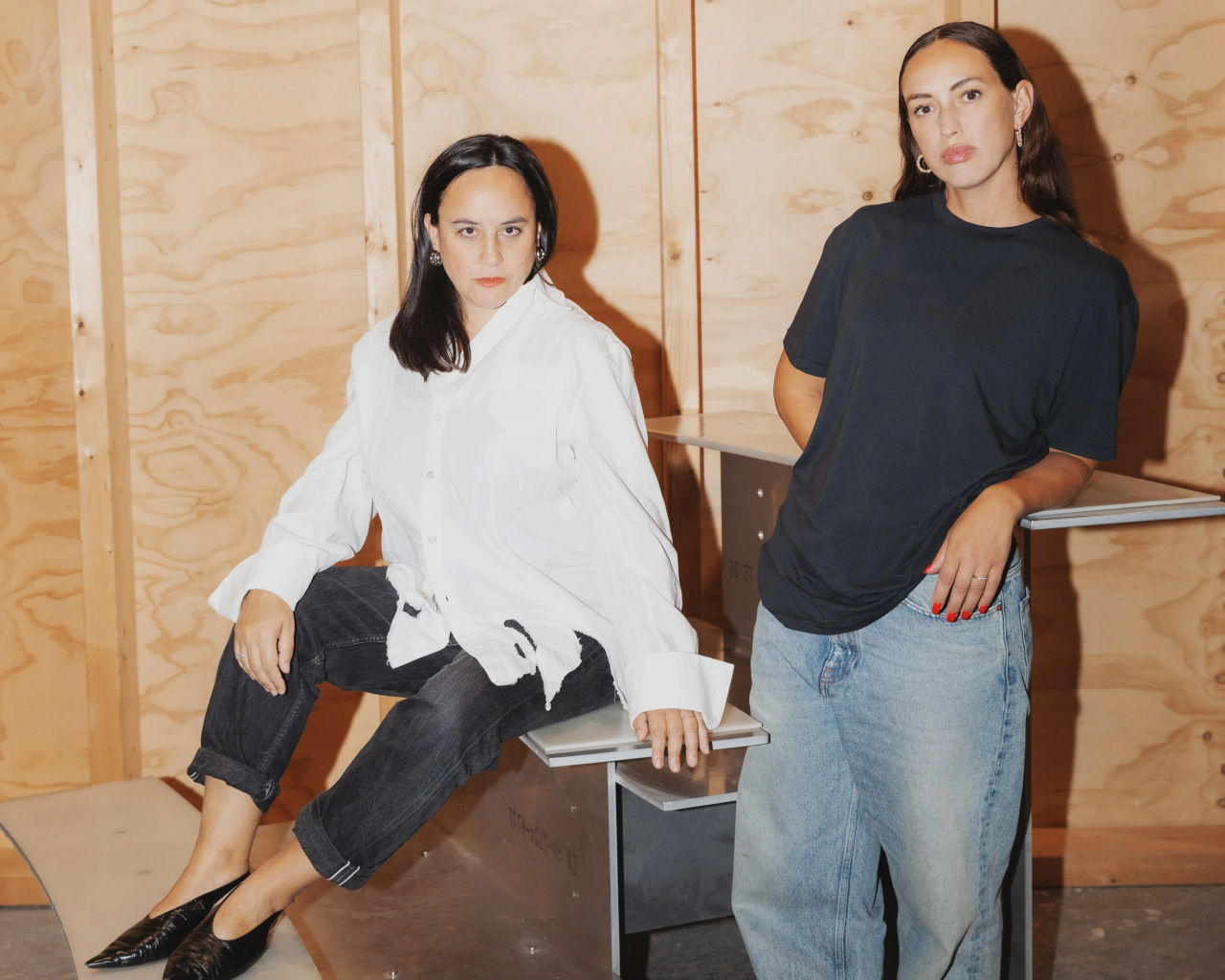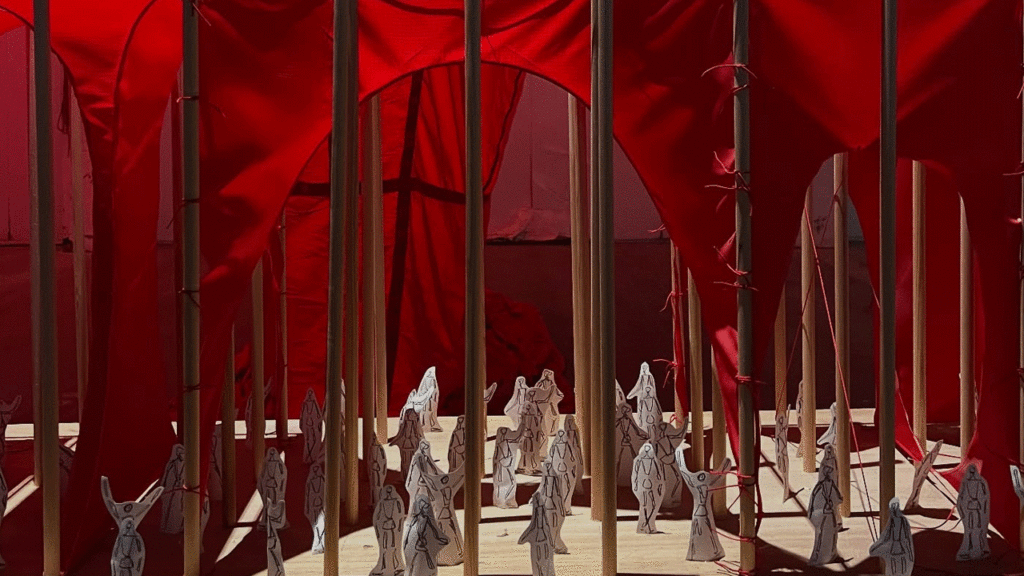Amsterdam and Rotterdam are roughly 30 minutes apart but are often confused to be the same. However, the distance is not the only distinguishing point between the two metropolises. They differ in many ways: Amsterdam supports Ajax FC, while Rotterdam roots for Feyenoord FC. Amsterdam is known for its canals, museums, and vibrant nightlife, while Rotterdam has always been considered a second-choice destination for tourists visiting the Netherlands. To put it in a nutshell, Rotterdam has consistently played second fiddle in Dutch design, culture, and lifestyle spheres, while cities like Amsterdam and Eindhoven are generally considered the front runners.
So, when Liv Vaisberg and Sarah Schluten announced the inaugural edition of Rotterdam Design Biennale, they referred to Rotterdam as the “city of no nonsense.” “In this city, we often say, don’t talk, but act,” Liv Vaisberg states.

This undaunting clarity not only showcased the bold and direct approach of the curators but also ran through every facet of the event, from its conceptual foundations to its hands-on exhibitions across more than 15 iconic city venues. Clearly, the Rotterdam designers wanted to change the notion of the city playing an underdog and wanted to cement its place at the pinnacle of the country’s design sphere.
As a result, in its inaugural year, more than 100 designers participated in Biennale. A number big enough to address a range of urgent issues: cultural hybridity, sustainability, and the redefinition of everyday objects. Rotterdam Design Biennale, which ran from February 20 to March 2, 2025, also explored the theme ‘What’s Real is Unfamiliar,‘ inviting designers, artists, and thinkers to engage with the unknown, questioning the very nature of reality through the lens of design.
The result was exhibition spaces that became a means of critical dialogue and offered a glimpse into the direction design is taking in the 21st-century Rotterdam. One of the Biennale’s key contributions was its focus on cultural hybridity, which underscores Rotterdam’s commitment to diversity and inclusivity in design. The city’s rich cultural mix was reflected in the range of works presented, which blended traditions from different cultures with cutting-edge design concepts. An example of this cross-cultural approach was Adam Maryniak, a Polish-British designer who exhibited Chairs of Virtue at Design Biennale Rotterdam.

Adam spoke to Homecrux, stating, “The city’s radical reconstruction after WWII allowed architects and urban planners to rethink the built environment, which led to bold, experimental projects that defined Rotterdam as an architectural playground. Rotterdam Design Biennale applied the same attitude towards the subject of design. If it keeps this trajectory, it will stand in competition with Milan, London, or Eindhoven as a destination in Europe that attracts and fosters forward-thinking ideas.”
Marniyak further points out, “The biennale has created space to show the new wave in experimental design, drawing both designers and businesses to the city. This influx of creators and industry professionals places Rotterdam firmly on the map as a vibrant centre for contemporary design.”
Another Canada-born and Rotterdam-based designer, Sarah Roseman, who exhibited the Molten Memories (a patchwork textile floor piece) collection at Design Biennale Rotterdam, seconds Maryniak’s thoughts, stating, “Rotterdam’s transformation into a design powerhouse is deeply rooted in its post-WWII history. The city’s radical reconstruction, following the devastation of the war, provided architects and urban planners the opportunity to reinvent the built environment.”

Sarah further informs, “The inaugural Design Biennale Rotterdam was a great success, shining a long-awaited spotlight on the city’s diverse and vibrant design community. Rotterdam stands out for its abundance of industrial and commercial spaces, which have fostered a thriving network of workshops. This has cultivated a design culture deeply rooted in craftsmanship, giving the city a distinctive design identity. By drawing attendees from across the Netherlands and beyond to the very place where the work is created, the event highlighted the importance of local production.” This international, cross-cultural approach is expected to foster a more inclusive, globally relevant design scene moving forward.
Beyond cultural hybridity, a central theme of the inaugural Rotterdam Design Biennale was sustainability and cross-promotion. The event highlighted the growing importance of design that works in harmony with the environment and addresses global challenges.
Caspar Schols, another Dutch designer, argues that “Sustainable design is crucial for both our planet’s and our own health, stating that reconnecting with nature is essential for making more informed choices that reduce the strain on the environment.” The theme resonated throughout the event, with designers exploring ways to create products and solutions that promote environmental responsibility.
Kees Deckers, another Dutch designer, highlighted the need for collaboration between global companies and designers. “These partnerships signal the potential for Rotterdam to be a leader in not only sustainable design but also in collaborative, innovative approaches that push the boundaries of what design can achieve,” he stated in a candid chat with Homecrux.
The Rotterdam Design Biennale’s inaugural edition sets a strong foundation for the city’s future as a global design hub. The event was not just about showcasing cutting-edge design but also announcing its arrival on the grand stage as a city that is now a space for reflection, creativity, and experimentation. While Ajax FC might have the better of Feyenoord FC lately, and Eindhoven may still end up attracting more tourists for the Dutch Design Week, the successful edition of Rotterdam Design Biennale has sown the seeds of Rotterdam’s rise from playing second fiddle to potentially becoming the design capital of the Netherlands.
Follow Homecrux on Google News!




